|
Displaying items by tag: government
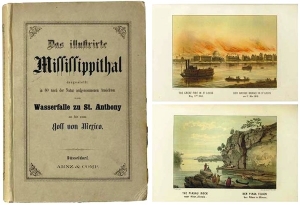
Sometime after 1994, a former employee of Sweden’s National Library stole approximately 56 rare antique books once belonging to the country’s royal family. The thief, Anders Burius, eventually confessed to the theft, consigned the objects to the German auction house, Ketterer Kunst, and subsequently committed suicide.
In 1998, investigators were able to track 13 of the stolen volumes from Ketterer Kunst to the U.S. where Stephan Loewentheil, a Baltimore-based book dealer, bought two of the volumes, unaware that they were stolen. On Wednesday, July 24, 2013, the FBI were finally able to return the objects to the Swedish government, whereby officials honored Loewentheil for his assistance in recovering the books.
The recovered books include a 19th century German volume about the Mississippi River by Henry Lewis and a 17th century French book about the Louisiana territory by Louis Hennepin. The latter features the first published description of Niagara Falls and the first published landscape of the Louisiana Territory.
While Sweden and the National Library are thrilled to have the volumes back, a large portion of the works stolen by Burius are still missing.
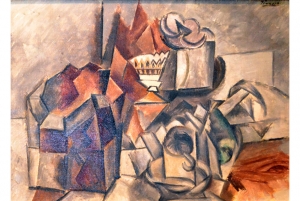
The Department of Justice has restrained Pablo Picasso’s (1881-1973) Compotier et taste (1909) on behalf of the Italian government. The request is part of an ongoing investigation that Italian officials have been conducting. The painting, which is worth $11.5 million, is tied to Gabriella Amati and her late husband, Angelo Maj, who were charged by the Italian Public Prosecutors’ Office with embezzlement and fraudulent bankruptcy offenses. The restraining order was sought in connection with the criminal proceedings.
Amati and Maj, along with a public official in Naples, are accused of misappropriating tax receipts for the city. The trio also planned schemes to embezzle Naples’ tax revenue and fraudulently claimed refunds to Naples taxpayer to make transfers to their own bank accounts seem legitimate. The city of Naples lost approximately $44 million due to Amati and Maj’s schemes.
The Picasso painting, which was recovered by special agents in New York while it was being offered for private sale, will remain in the court’s jurisdiction. The U.S. is working closely with the Italian Public Prosecutors’ Office to forfeit the painting to Italy. Restraining the painting will hopefully help recovered the millions of dollars Naples lost because of Amati and Maj.

The Swiss government has launched a website that will help claimants, museums, and researchers track Nazi-looted artworks that have made their way to Switzerland. Switzerland became a hub for Nazi plundered artworks following World War II. The country was a popular place for Jewish art dealers who were fleeing the Nazis and many Swiss museums, collectors and dealers acquired works stolen from the Jews by the Nazis.
The new site will provide visitors with guidance on provenance research, links to relevant databases and archives, and details on Swiss museums’ own analyses of their collections. Switzerland is one of 44 countries that sanctioned the Washington Principles on returning Nazi-looted art in public collections in 1998. Under the policy, governments agreed to find “just and fair” solutions for the victims of Nazi plundering and their heirs as well as to allocate resources to identifying looted art. In spite of Switzerland’s cooperation, it is still believed that there is a fair amount of Nazi-looted artworks in Swiss collections. Provenance research has only been conducted among a select few of the government museums, private collections, and foundations that have artworks from this tragic period.
Switzerland’s newly launched website for tracking Nazi-looted artworks is www.bak.admin.ch/rk.
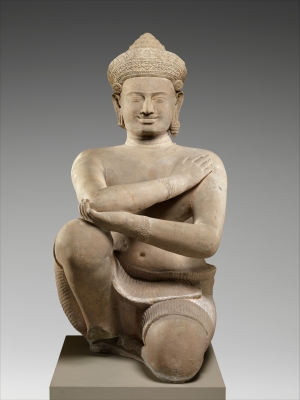
Two 10th century statues that were looted from jungle temples have been returned to Cambodia by the Metropolitan Museum of Art. The Met announced in May 2013 that they would send the Khmer sculptures known as Kneeling Attendants back to Cambodia after being displayed in the museum’s Asian Wing for 10 years.
Hab Touch, director general at the Ministry of Culture, said, “The return of the statues is a historic event for us.” Seven Buddhist monks blessed the life-size statues during a religious ceremony attended by officials from the government and the Met at the airport. Upon their return to Cambodia, the sculptures will be put on display at the Peace Palace in Phnom Penh and later kept at either the National Museum in the capital or at a museum in the northwestern city of Siem Reap.
The two statues were looted from the Koh Ker temple site in the early 1970s. At the time, Cambodia was being ravaged by a brutal civil war and looting was rampant. The works were donated piece by piece to the Met in the late 1980s and 1990s. Recent documentary research revealed that the statues were in fact looted from Cambodia.
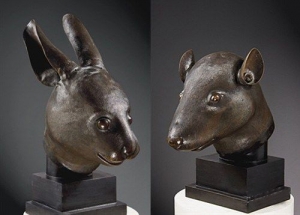
Francois-Henri Pinault, a French billionaire and CEO of the luxury-goods brand, Kering (formerly PPR), has announced that he will return a pair of Qing dynasty bronze statues to China. The looted bronzes were part of a 2009 auction at Christie’s in Paris that sparked a campaign in China aimed at putting an end to intimidation by foreign powers. Officials from Beijing have applauded Pinault’s efforts to create a more camaraderie-focused dynamic between France and China. Pinault is the owner of the Artemis Group, Christie’s holding company.
The works to be returned to China are the bronze heads of a rat and a rabbit, which were part of a group of 12 animal heads that were looted from Beijing’s Summer Palace by French and British troops in 1860 during the Second Opium War. Since emerging as a powerful international force in recent years, China has been campaigning for the return of the works. Five of the bronzes have been given back to China and one is in Taiwan while the whereabouts of the remaining four pieces remain a mystery.
The bronzes being returned to China by Pinault were previously owned by French fashion designer Yves Saint Laurent and were put up for auction in 2009 following his death. Chinese officials voiced opposition at the time of the sale and an advisor to a Chinese government fund placed the winning bid on the bronzes but never ended up paying for them. The works were returned to Pierre Berge, Saint Laurent’s former partner.
Pinault is working with the Cultural Heritage Administration to get the bronzes back to China as quickly as possible. The decision is a clever move on Pinault’s part as his businesses, which include Gucci and Puma, have been thriving in China’s growing consumer economy.

After 89 years in British collections, Pablo Picasso’s (1881-1973) Child with a Dove will leave the UK. The painting, which marks Picasso’s transition from a predominantly Impressionist style to his somber blue period, was sold last year to a collector in Qatar for nearly $77 million. The UK’s government quickly placed an export ban on the work in hopes that a British buyer would step up and claim the painting. The ban expired in December and no British collector or institution was able to raise the funds necessary to keep Child with a Dove in the country.
Qatar has emerged as a major force in the modern and contemporary art markets in recent years. In 2011, the emirate purchased one of Paul Cézanne’s (1839-1906) versions of The Card Players for $250 million. Other major acquisitions by the country include Mark Rothko’s (1903-1970) White Center (Yellow, Pink and Lavender on Rose) for $72 million as well as works by Andy Warhol (1928-1987) and Richard Serra (b. 1939).
Child with a Dove first came to the UK in 1924 after being purchased by a British collector, Mrs. R.A. Workman. The painting eventually made its way to the art collector Samuel Courtauld and following his death in 1947 was bequeathed to the Welsh Aberconway family. Christie’s sold the painting in 1947 on behalf of the Aberconways. Just last year the painting went on display at the Courtauld Gallery, which Samuel Courtauld founded, as part of the exhibition Becoming Picasso: Paris 1901. The exhibition ends on May 27, 2013 at which point the painting will be returned to Christie’s and then shipped out of the UK.
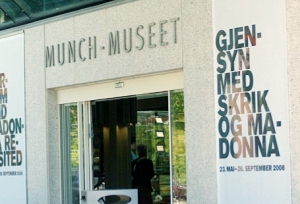
On Wednesday, March 13, 2013 Norwegian officials announced that the country’s government would help fund a new museum devoted to the influential painter and printmaker Edvard Munch (1863-1944). The new institution will replace the current Munch Museum in Oslo, Norway, which was built after World War II in a notoriously rundown neighborhood. Many believe that the shoddily constructed museum does not do justice to Munch, his art or his legacy.
The city council has been discussing the creation of a new museum since 2008 but plans were stymied by disagreements over cost, location, and architecture. After years of disputes and little progress, the Norwegian state decided to step in by offering to help fund the $278 million project as well as assist with project management. State officials are asking Oslo’s city council to make a formal request for the support, which would hopefully lift the museum out of its dismal financial situation.
Upon his death in 1944, Munch bequeathed a large portion of his collection to the city of Oslo including two versions of his seminal painting The Scream. While many people hope that the government’s offer will help move the museum project along, others are not as optimistic. Carl Ivar Hagen, a member of the city council, doesn’t expect the matter to be resolved anytime soon. Hagen believes that even with the state’s assistance disputes over the new museum’s location will continue to halt progress.
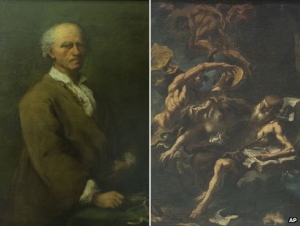
France will return seven paintings stolen from their Jewish owners by Nazis during World War II, part of an ongoing effort to give back hundreds of plundered works that still hang in French institutions including the Louvre. The seven paintings were all stolen or sold under duress as their owners fled Europe during the Nazi occupation. The works were to be displayed in Adolf Hitler’s art gallery, which he planned to build in his birthplace in Austria but never came to fruition.
At the end of World War II, with most of Europe in shambles, many artworks were left unclaimed and thousands of French-owned works found homes in the France’s various museums. Government efforts to return these works gained steam last year at the urging of the owners’ families. The French government believes that there are approximately 2,000 Nazi looted artworks in state institutions; inaccurate archiving and the challenge of properly identifying paintings has made the restitution process a long one.
Six of the seven works to be returned were owned by Richard Neumann, an Austrian Jew who sold his remarkable art collection for a fraction of its value in order to flee Europe. His collection included works by Alessandro Longhi (1733-1831), Sebastiano Ricci (1659-1734), and Gaspare Diziani (1689-1767). The paintings were ultimately placed in the Louvre, the Museum of Modern Art of Saint-Etienne, the Agen Fine Arts Museum, and the Tours Fine Art Museum after the war.
The other painting to be returned is Pieter Jansz Van Asch’s (1603-1678) The Halt, which was stolen by the Gestapo in Prague in 1939 from Josef Wiener, a Jewish banker who was deported and later died in a concentration camp. The Dutch masterpiece hung in the Louvre for years until Van Asch’s family tracked it down online in the mid-2000s. The French Prime Minister, Francois Fillon, approved the return of the painting to the family last year.
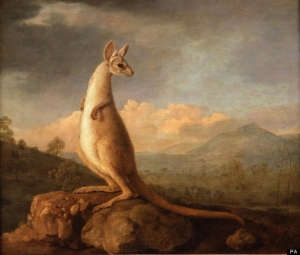
The British government has placed a temporary export bar on two important oil paintings by George Stubbs (1724-1806), an English painter best know for his depictions of horses. The works, which went on display at London’s Royal Academy in 1773, gave the British public their first glimpse of a kangaroo and a dingo.
Since Stubbs was unable to paint the animals, which are native to Australia, from life, he created Kongouro from New Holland (The Kangaroo) (1772) and Portrait of a Large Dog (The Dingo) (1772) from spoken accounts. He also made sketches of the kangaroo after inflating the animal’s preserved skin. Stubbs won praise for bringing the likenesses of the foreign animals to the British public for the first time. It is believed that Sir Joseph Banks commissioned the paintings after assisting in Captain James Cook’s first voyage to the Pacific.
Culture Minister Ed Vaizey announced the temporary export bar on Wednesday, February 6, 2013 following a recommendation by the Reviewing Committee On The Export of Works of Art and Objects of Cultural Interest. The ban will remain in place until August 5, 2013 and may be extended until November 5, 2013. Potential buyers will need $8.6 million to keep the paintings in Britain.
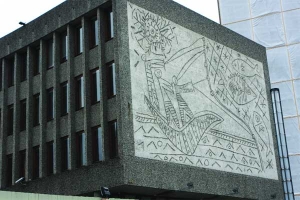
Between the late 1950s and early 1970s Pablo Picasso (1881-1973) completed two major concrete murals on separate government buildings in Oslo, Norway. After suffering severe damaged during a terrorist attack on the city in 2011, the Norwegian Directorate for Cultural Heritage fears that the monumental public masterpieces could be demolished.
Officials have been considering tearing down the buildings, which make up Oslo’s government quarter, and integrating the salvaged murals into a new structure or relocating the work to an entirely new site. However, some feel that altering and moving the work would destroy Picasso’s vision. A number of architects are working on proposals that include both retaining the buildings, which are important examples of Norwegian architecture, and leveling them. The various plans will be presented to the minister for government administration this summer.
Picasso made sketches for five murals that were executed as both interior and exterior works. The project in Oslo was the first time Picasso had ever worked with breccia, a rock material composed of broken rock and mineral fragments held together by a fine-grained matrix. Although He went on to create similar works in Barcelona and Stockholm, the Oslo murals remain seminal works for Picasso.
|
|
|
|
|